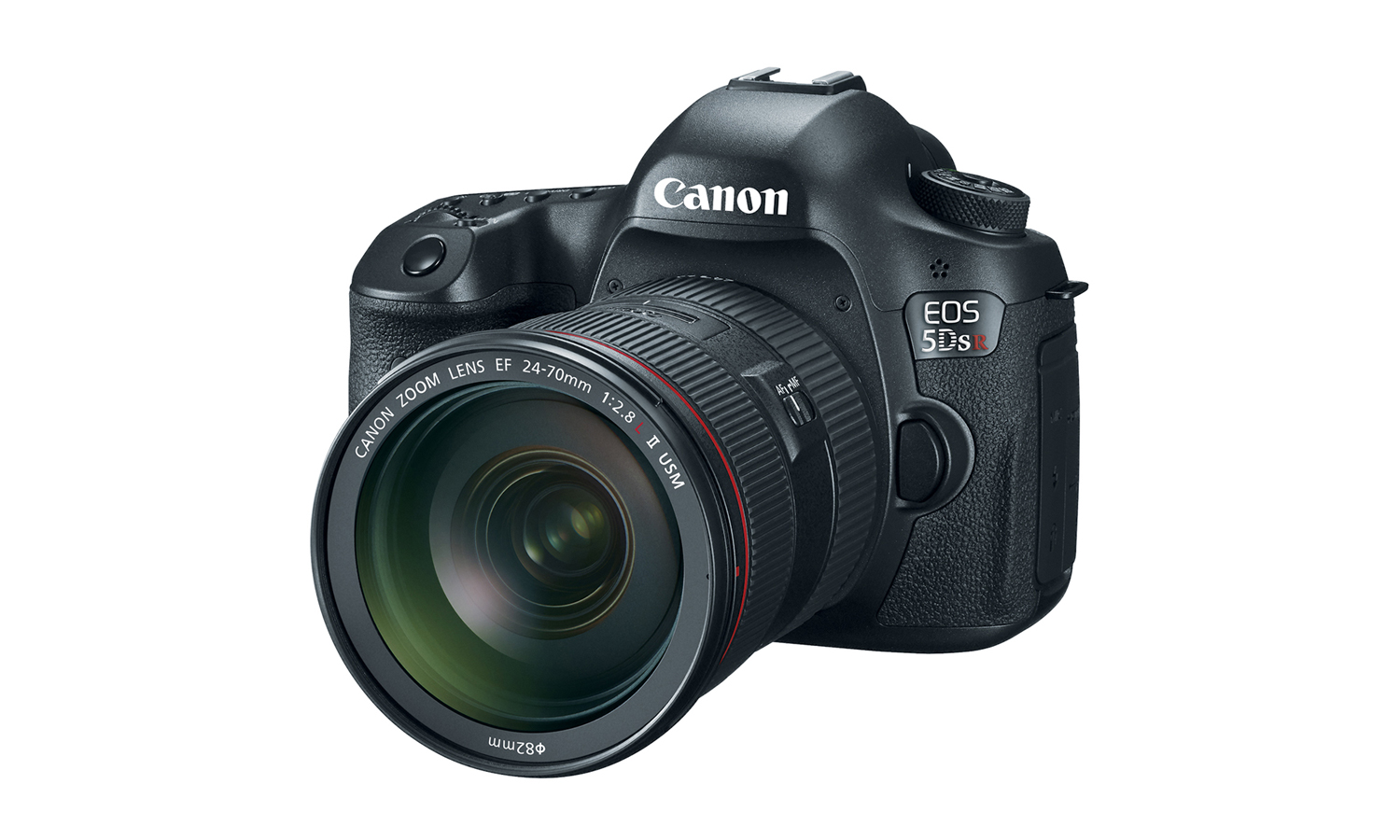Tom's Guide Verdict
The Canon EOS 5DS R is an excellent camera for studio and landscape photographers, delivering 50-MP resolution and finely detailed images.
Pros
- +
Highest resolution full-frame DSLR
- +
Excellent image quality
- +
Extensive feature set
- +
Optical low pass filter cancellation for sharper images
- +
Weather-sealed body.
Cons
- -
Potential for moiré under certain conditions
- -
No Wi-Fi, GPS or HDMI out
- -
Lacks headphone jack for audio monitoring.
Why you can trust Tom's Guide
With more than double the resolution of its 5D Mark III sibling, the Canon 5DS and 5DS R has set a new record for full-frame DSLRs with their 50.6-megapixel CMOS sensors. The 5DS ($3,699) and 5DS R ($3,899) are built around the same body, controls and most features of the 5D Mark III. More importantly, Canon has tweaked the body design and added options to minimize camera vibration since anything less than perfect focus is much more critical in large files.
The only difference between the 5DS and 5DS R is that the latter has a separate filter that cancels the effect of the OLPF (optical low pass filter), providing the “R” model—reviewed here—with slightly sharper images. And while it lacks some of the video features of its Mark III sibling, the 5DS R offers some of the sharpest images this side of a medium format camera.
Design: Canon shooters will feel right at home
A virtual clone of the 5D Mark III ($2,499), the new 5DS R ($3,899) measures 5.98 x 4.58 x 3.01 inches and weighs a hefty—for its size--29.80 ounces (body only). Like its sibling, the 5DS R is sturdily built and weather- and dust-proof. There’s really nothing visible other than the nameplate to differentiate the older model from the new.
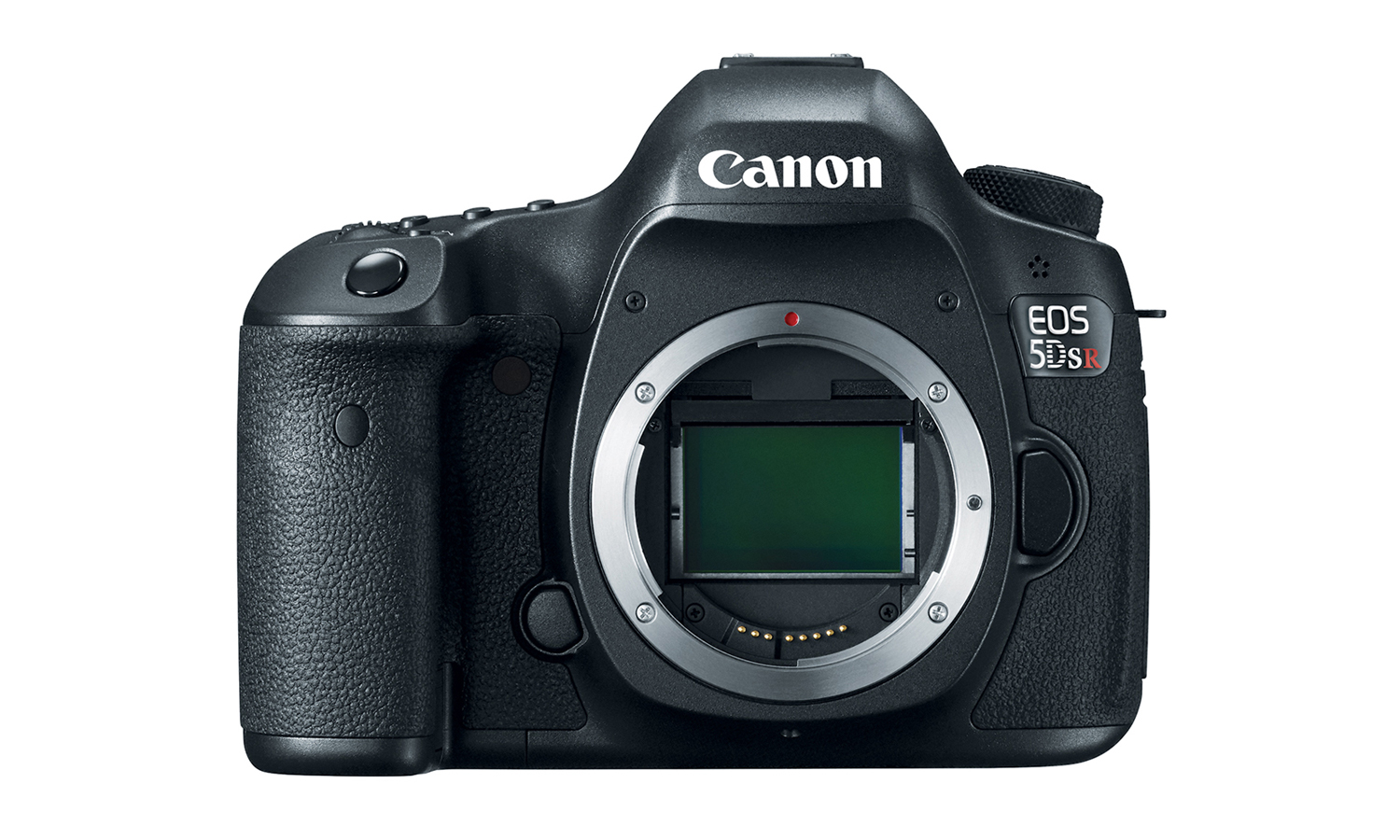
However, Canon has reinforced the chassis, baseplate and tripod lug on the 5DS R to provide a more rigid body to stabilize the camera against unwanted vibrations. With a 50-megapixel sensor, the slightest movement, including the vibration (“slap”) from the mirror flipping up to expose the sensor to light, can result in slightly blurred images. The reinforced body stabilization is complemented by user-controlled options via the new Arbitrary Release Time Lag Setting in Mirror Lock mode, which I’ll discuss below.
Given its size, weight and design, photographers with large hands will feel comfortable working with the 5DS R. Although my hands are fairly petite, I found the camera easy to hold and operate, even for long periods of time.
The optical viewfinder (OVF) provides an approximate 100 percent field of view for accurate composition. If you decide to use one of the 5DS R’s crop modes (1.3x or 1.6x), the cropped field of view is visible in the viewfinder. The viewfinder is clear and bright, although the focusing screen is not interchangeable.
Overlays for exposure, ISO and other data can be customized by adding or omitting options such as battery level, white balance and drive, among others. Overlays use black markings, which are difficult to read against a dark background but can be set to illuminate—along with focus points—when the shutter is half pressed (options are set in the camera’s AF menu). However, as is typical for Canon, focus points and the overlay are illuminated only for a split second. I’d much rather have everything illuminated for as long as I keep the shutter half pressed.
Get instant access to breaking news, the hottest reviews, great deals and helpful tips.
The 3.2-inch, 720 x 480 pixel (1.04 million dot) LCD has an anti-reflection coating, delivers an approximate 100 percent view and works well under almost all lighting conditions. The LCD’s brightness can be adjusted automatically or manually for more precision. The former is more than sufficient for day-to-day shooting but I’d suggest using the manual adjustment for extreme lighting conditions and for viewing more critical images.
Dual card slots accommodate a Type 1 CompactFlash card and an SD/SDHC/SDXC card (MultiMedia Cards cannot be used). Various recording options include saving images to a single card, using the second card as overflow or backup and saving the same image at different sizes between the two cards.
MORE: Best DSLR Cameras
Given the camera’s 50-MP sensor, you’ll need a high-capacity card. A high-speed card will help lessen the time it takes for the camera to read and write data. More importantly, video recording requires a high-speed card.
Like its siblings, the 5DS R does not have a built-in flash but is equipped with a hotshoe to attach a Canon Speedlite. A monaural microphone is built in but an external stereo microphone can be attached to the camera’s microphone IN terminal.
Additionally, the camera offers a USB 3.0 port, mini-HDMI out, video out, an extension system terminal for connecting a WFT-E7A (v. 2) wireless file transmitter and GP-E2 GPS receiver.
Image Quality: Super Resolution
A 50-MP sensor is a double-edged sword. On the one hand, the resolution is amazing and the 5DS R can capture truly impressive images with extremely fine detail and excellent sharpness. With large file sizes, it’s easy to create large prints and/or crop images with more than enough pixels to maintain quality.
On the other hand, large file sizes come with potential drawbacks, particularly when working in RAW. A full resolution RAW file open in Adobe Photoshop is 144MB (8-bit) or a whopping 288MB (16-bit). To avoid filling up your computer’s storage, it’s best to store these images on an external drive.
But that’s a small price to pay to achieve the extreme resolution and crisp details the 5DS R delivers, particularly when paired with a sharp lens like the Sigma 50mm f/1.4 DG HSM Art Lens.
Until I took this shot, I never thought about whether or not cows have eyelashes. But, as you can see, they do indeed have eyelashes, which are clearly delineated in the image below, along with the texture of the blue and yellow rope. If you want even finer detail, check out the 5DS R’s new “Fine Detail” Picture Style, which enhances the sharpness in JPEGs and movies.

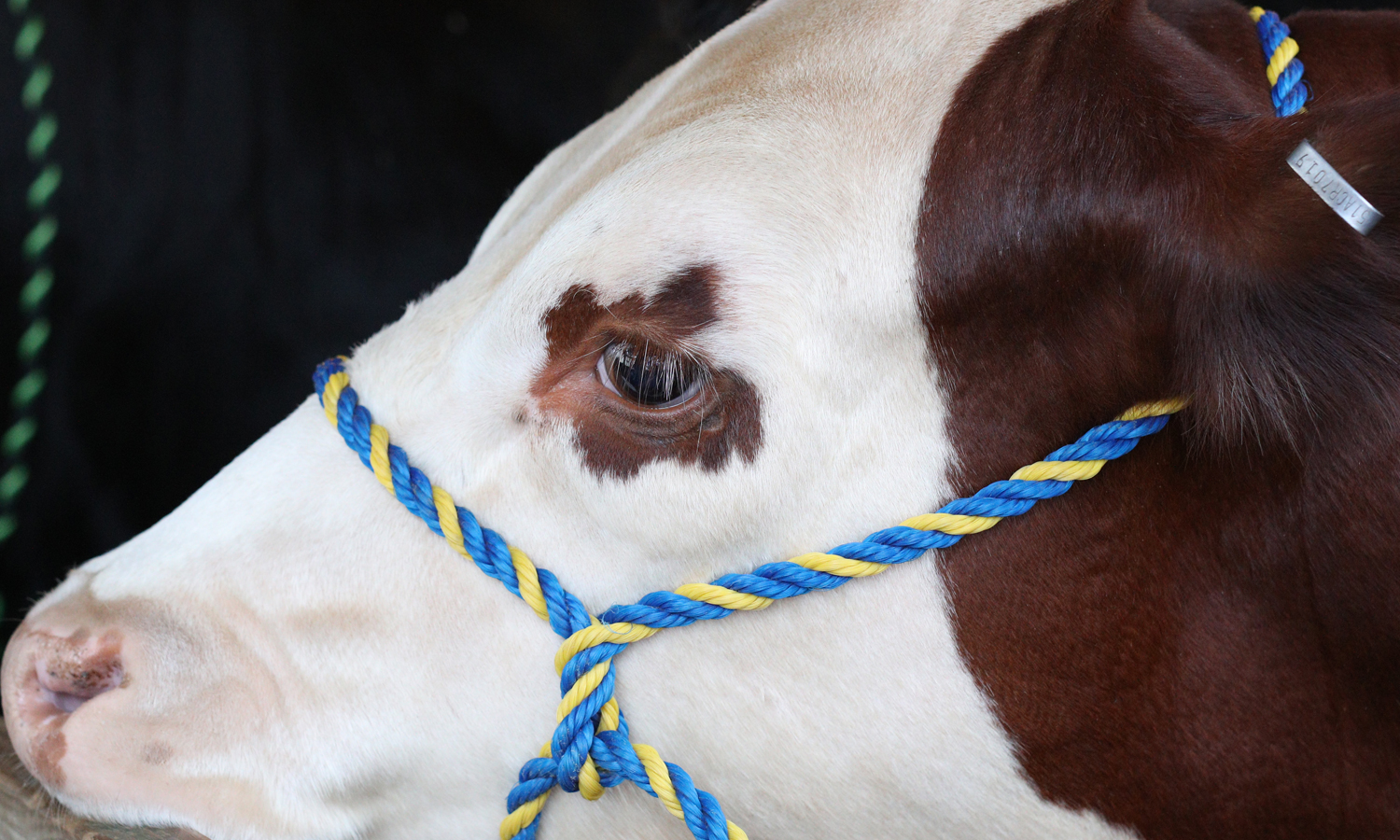
Overall, the camera exhibited good dynamic range and even exposure under most conditions. However, its closest competitor, the 36 MP Nikon D810 ($2,999.95), delivers a broader range from highlights to shadows. While an overcast sky helped avoid blown highlights and blocked shadows in this man-made mini waterfall shot, the 5DS R did an excellent job capturing the subtle tone and texture differences in the rocks and foliage.

These goats took advantage of a little bit of shade on a sunny afternoon, but the camera maintained good detail throughout the highlights and all but the deepest shadows in the background.
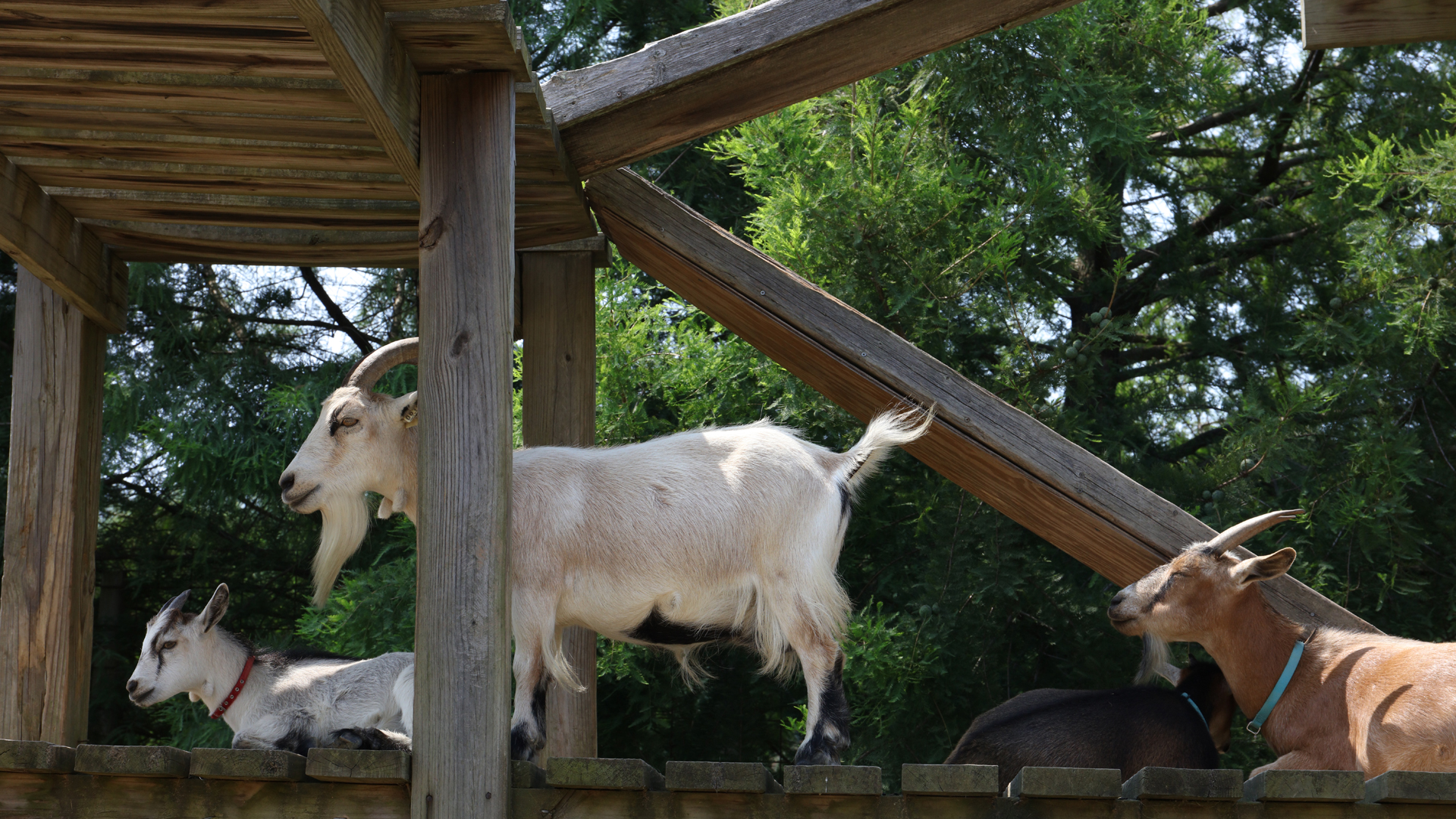
In addition to Auto and User Defined Picture Styles, the Canon 5DS R offers seven customizable options. I shot with the Standard Style, at its default settings, using auto white balance and was generally pleased with the color accuracy in test shots. Colors were rich and, as the style promised, slightly more vivid than the Neutral Style. The latter is better suited for post-processing but I found that the Standard Style worked well across the board reproducing the bright colors of this small fairytale house and keeping the surrounding foliage more natural looking.

Low Light: Limited ISO
Shooting in extreme low light isn’t the 5DS R’s strong suit with its modest ISO range of 100-6400, which is expandable to ISO 50 and 12800. Although their full-frame sensors are packed with slightly fewer megapixels, the Nikon D810 with its base 64-12800 ISO (expandable down to 32 and up to 51,200) and Sony’s 42 megapixel full-frame mirrorless A7R II, with a base ISO of 100-25,600 (expandable to a low of 50 and up to 102,400) have an edge when it comes to low light/high ISO capture.
That said, the 5DS R handled image noise quite well at lower ISOs, particularly under 1000-1600, delivering relatively clean files with good detail capture. While pixel peepers will notice minor image noise in the sky of this low light shot captured at ISO 1000, there was little visible noise in the carnival ride itself. As a bonus, the 5DS R’s auto white balance was surprisingly accurate.
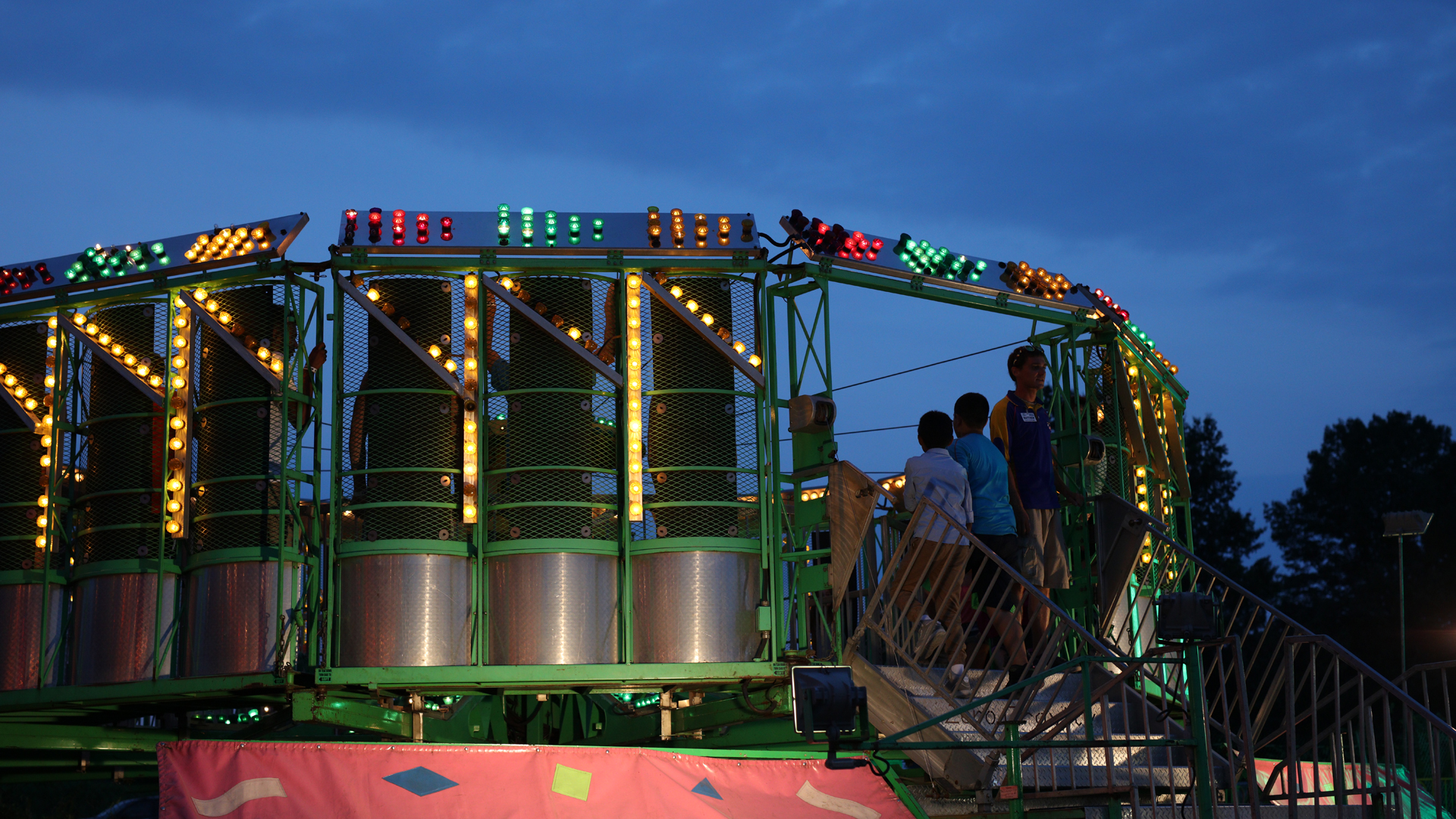
Depending on conditions, you can easily get a usable image at ISO 6400 as long as you don’t crop too tightly or output a really large print (the maximum size is relative to the image and how tolerant you are of image noise). The two images below were shot as comparisons with the one of the left, shot at ISO 100; the one on the right at ISO 6400. While I’m not a fan of in-camera high ISO noise reduction, the 5DS R easily maintained sharp details in the image on the right, particularly in the highlights.
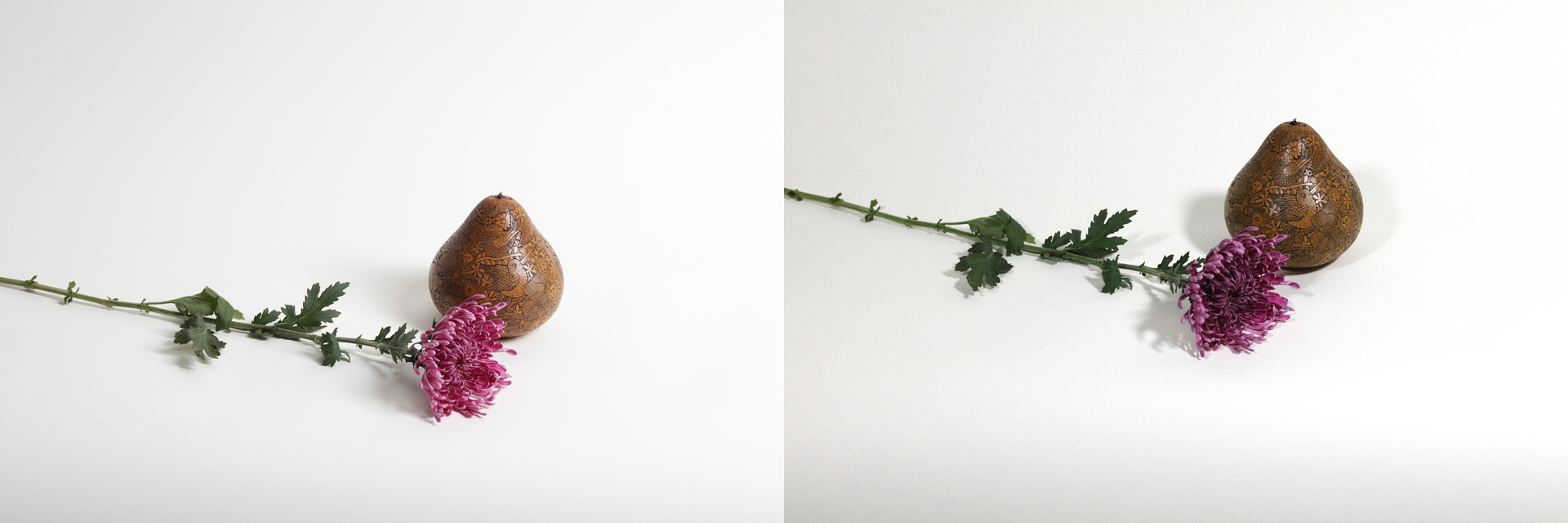
Image noise also results from long exposures and while the 2 second exposure below, doesn’t go to extremes, the image was surprisingly noise free—in the sky and even on the static portion of the ride on the right.
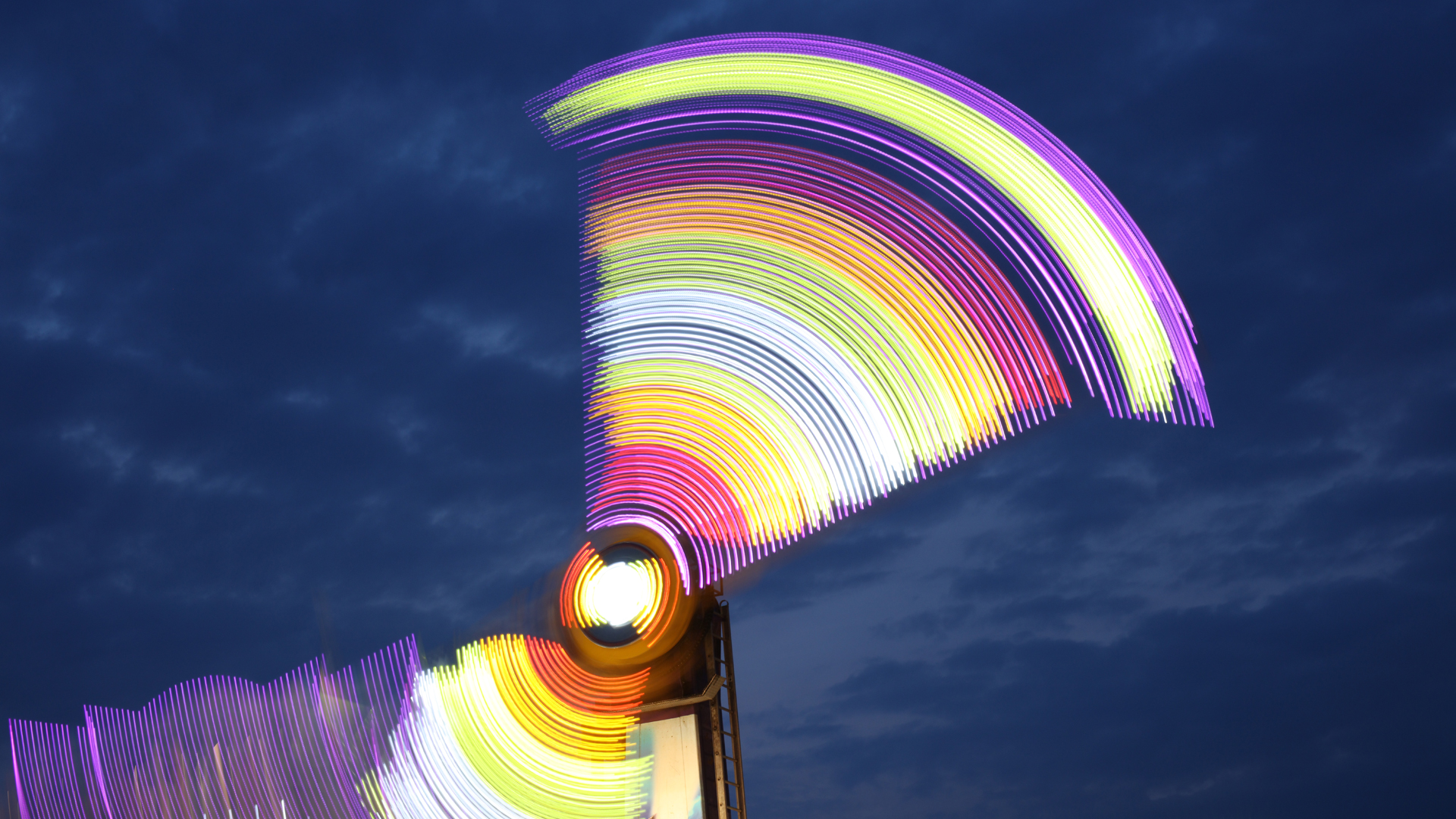
Autofocus and Speed: Competitive performance
Using the same 61-point autofocus system as the 5D Mark III, the 5DS R’s autofocus is solid in bright light, locking in quite readily. Live View AF, while not as fast, also performed well in bright light. Low light situations slowed AF slightly, but I had few complaints.
The 5DS R offers a wide range of AF options from which to choose based on the shooting conditions and personal preferences. The AF menu offers a number of different scenarios ranging from Case 1—a general, multi-purpose setting—to, for example, Case 4, designed to track subjects that accelerate or decelerate quickly. It’s a sophisticated system and, fortunately, the camera’s built-in help explains the different options.
Overall performance was good, especially considering the amount of data the camera is processing and reading/writing to memory cards. The 5DS R tops out at 5fps continuous shooting—the same as the Nikon D810 in full-frame mode—and can capture about 14 fine JPEG + RAW in a single burst. Although Canon offers Medium and Small RAW file options, at 28.5 and 12.4 megapixels, shooting these smaller file sizes or even using its 1.3x and 1.6x crop modes does not increase continuous shooting speeds.
Given its 50-MP sensor, even the slightest blur from camera shake affects images. To counteract the vibration that occurs when the mirror flips up to allow light to hit the sensor, Canon has equipped the 5DS R with a new motorized mirror mechanism to cushion any vibration that occurs (the Nikon D810 also has a vibration reducing mechanism). But Canon went further to reduce vibration effects with the addition of the new Arbitrary Release Time Lag Setting in Mirror Lock mode. This allows you to set a delay—1/8, ¼, ½, 1, 2 seconds—between when you press the shutter and when the image is captured. This provides time for the vibration to subside before taking the picture.
Video Quality: Solid performance but some limitations
While the 5DS R offers a good range of exposure controls for video capture and delivers visually pleasing movies, video is not this camera’s strong suit, particularly compared with the 5D Mark III. This is partly because the Mark III offers features such as clean HDMI output to record uncompressed video to an external recorder and also lets you monitor audio recording with external headphones.
The other downside to the 5DS R, like the 5D Mark III, is that full HD, 1920 x 1080-pixel frame rates are limited to 30/25/24 fps. You’ll have to drop to 1280 x 720 to get a faster 60/50 fps. That said, the 5DS R’s video quality is quite pleasing, with accurate colors and exposure. Image noise was limited, even at slightly higher ISOs, and the camera produces sharp footage.
This footage was shot at dusk with recording set at 1920 x 1080/30 fps and captured in All-i versus IPB compression options for best image quality. [All-i treats (and compresses) each frame individually, while IPB essentially drops some frames and “guesses” at the missing data in order to compress the footage. The All-i is a much better option for quality as well as the ability to more easily post-process the footage.]
Although a challenging scene for any camera, with its moving parts and blinking lights, the 5DS R capably reproduced this carnival ride with few anomalies. Again, as with earlier shots, the camera’s auto white balance worked well. Given the noisy surroundings, the audio wasn’t as clear as I hoped and came through a bit muffled but there was little shutter roll and no visible moire.
Shot on auto, this daylight scene was beautifully rendered with spot on exposure and good detail capture. Other than the sounds of the water, the surroundings were quiet and, therefore, produced a cleaner audio track. While the Canon EF 24-70mm f/4L lens provided crisp focusing, the zoom barrel was stiff and any attempts at zooming resulted in very jerky movements.
New for the 5DS R is the addition of an intervalometer for time-lapse shooting. It maxes out at 99 shots but can be set at intervals from 1 second to 99 hours, 59 minutes, or unlimited. The camera’s bulb timer is also useful for long exposures if and when you don’t have a remote.
Controls: Canon convenience
As a clone of the 5D Mark III, the 5DS R offers the same convenient control layout as its sibling. Dual control dials, a lockable mode dial with a trio of customizable slots and assorted buttons are typical Canon—and that’s a good thing. Anyone who shoots with a Canon DSLR can easily transition to the 5DS R.
A couple of my favorite controls include an AF point selection button for quick and easy access to manually position an AF point. The Quick Control Dial and Info buttons save time when changing settings on the fly and AF-ON button (if you use it), is within easy reach.
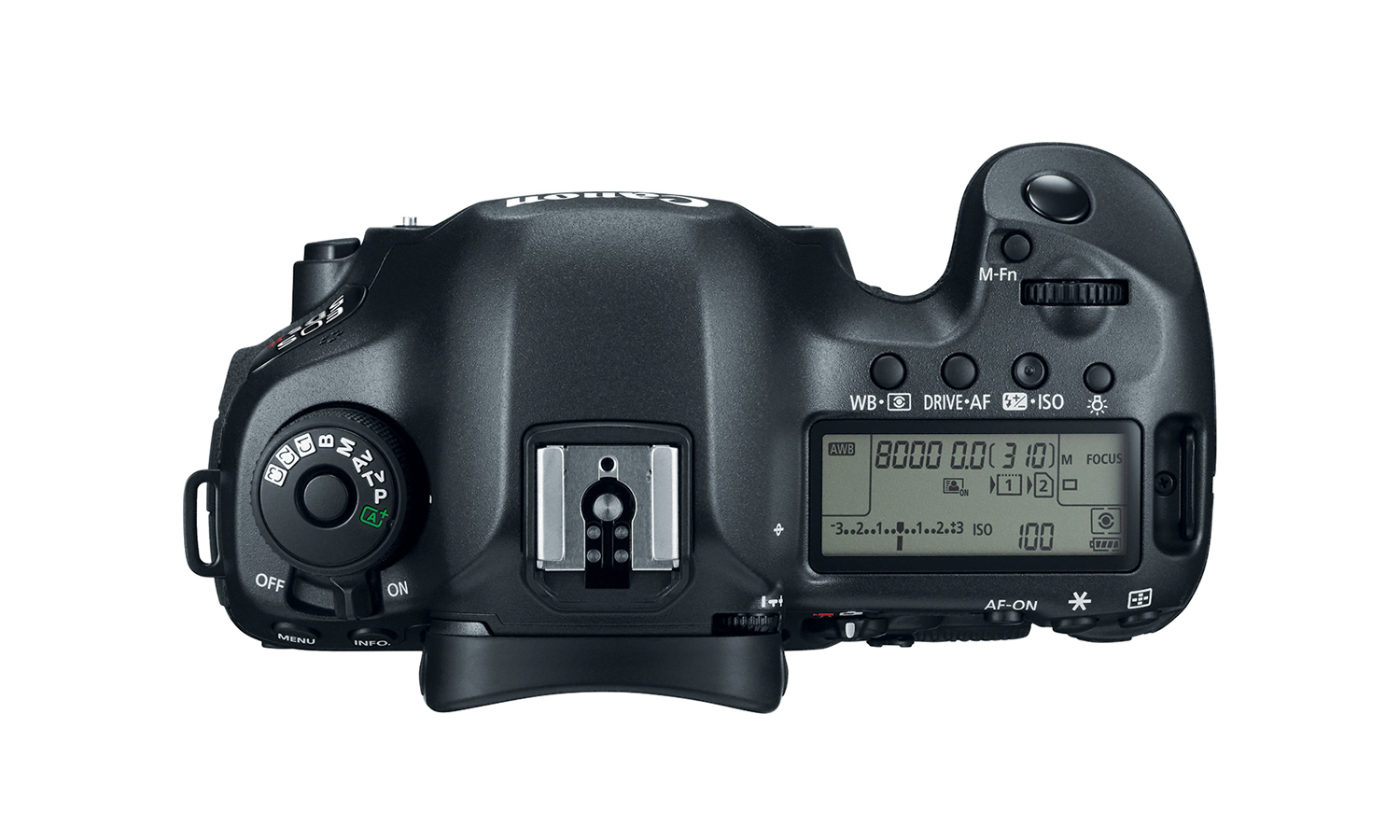
The 5DS R’s extensive menu system requires a deep dive to become familiar with the camera’s many features. The good news is that sections are clearly labeled and scrolling through each tab, with its variety of sub-menus, is relatively speedy using the main command dial. Like other cameras with a sophisticated feature set, it pays to read the manual and/or explore the menu system to get a sense of where to find various functions.
Battery Life
Like the camera’s ISO, battery life is modest, although that’s not surprising given the number of pixels it’s pushing and processing. My tests exceeded Canon’s estimate of 700 still images per charge using the viewfinder, and I was able to shoot a couple of days in a row without recharging. Add a battery grip ($280) and you’ll double that to 1,400 images per charge.
MORE: Best Waterproof and Rugged Cameras
Lenses and Accessories
With approximately 57 EF lenses (not including Tilt-Shift models), there’s plenty of glass to choose from for the 5DS R. Whether you want to shoot wide angle or need a super telephoto for those wildlife shots, Canon has you covered. Keep in mind that, unlike Nikon, Canon full-frame DSLRs are not compatible with lenses that are designed for cropped sensors (e.g., Canon EF-S).
Because of the camera’s high resolution, it’s important to couple the 5DS R body with the best lenses you can afford. Unfortunately, the 24-70mm f/2.8L II USM ($1,899) was not available for review and although the 24-70mm f/4L IS USM delivered sharp images, I have to wonder how much better its faster (and twice the price) 24-70mm sibling would have performed.
The Canon EF 85mm f/1.2L II USM ($1,999) performed exceptionally well, and the amazingly sharp Sigma 50mm f/1.4 DG HSM Art Lens ($949) quickly gained permanent residency in my camera bag.
More than a half-dozen Speedlites, macro ring lites and other flash accessories are available and gain even more importance since the 5DS R doesn’t have a built-in flash. If you want wireless, you’ll need the WFT-E7A ($850). GPS recorders are also optional.
Bottom Line
At less than half the price of the least expensive 50-MP medium format camera (Pentax 645Z, $8,499) and with a smaller and lighter body, the Canon EOS 5DS R not only fills a small gap for professional photographers but brings Canon a high resolution model that its lineup was sorely missing. If you don’t need full resolution all the time, the 5DS R allows you to choose smaller file sizes for projects that don’t demand as many megapixels.
Image quality is excellent and the camera’s full feature set meets the needs of even the most demanding photographers. The 5DS R can also generally hold its own when it comes to shooting speed, especially considering it’s pushing data from a 50-MP sensor for 5 fps bursts.
The most disappointing aspect of the camera lies in its video capabilities. While everyone will appreciate the manual video controls, the 5DS R hasn’t kept pace by including HDMI out for uncompressed footage, for example. If you’re brand agnostic or looking to switch from Canon, you may also want to check out the Nikon D810 ($2,996 body only) and, for those looking for a more compact high resolution camera, the Sony A7R II ($3,198 body only). But for its primary purpose--capturing exceptional still images--the 5DS R is a damn good choice.
Basic Specs
Model name: Canon EOS 5DS R
Megapixels: 50.6
Type: DSLR
Price: $3,899.00 (body only)
Shots per sec: up to 5 fps full resolution
Sensor type: Full-frame CMOS
AF points: 61 with up to 41 cross-type AF points
Shutter speed range: 1/8000-30 sec, Bulb
ISO range: 100-6400 (expandable to 50 L; 12800 H)
Main video resolutions/frame rates: full HD 1920 x 1080 at 30, 25, 24 fps; 1280 x 720 at 60, 50 fps; 640 x 480 at 30, 25 fps
Video file format: .MOV
Built-in flash? No
Hot shoe: Yes
Card type: dual slot CompactFlash and SD/SDHC/SDXC
Ports: USB 3.0, mini-HDMI OUT, video OUT, extension system terminal stereo mic input
Shots per charge: 700 (stills); 1,400 (stills with battery grip)
Wireless capabilities: with optional WFT-E7A version 2
Image stabilization: lens dependent
Dimensions and weight: 5.98 x 4.58 x 3.01 inches; 29.80 ounces (body only)
Theano Nikitas is a freelance journalist and photographer. She's been writing about photography for more than 20 years, contributing countless reviews of cameras, lenses, accessories and software packages to Tom's Guide. Her work has also appeared in dozens of other magazines and websites, including CNET, DPreview, PopPhoto, Professional Photographer and Shutterbug.
